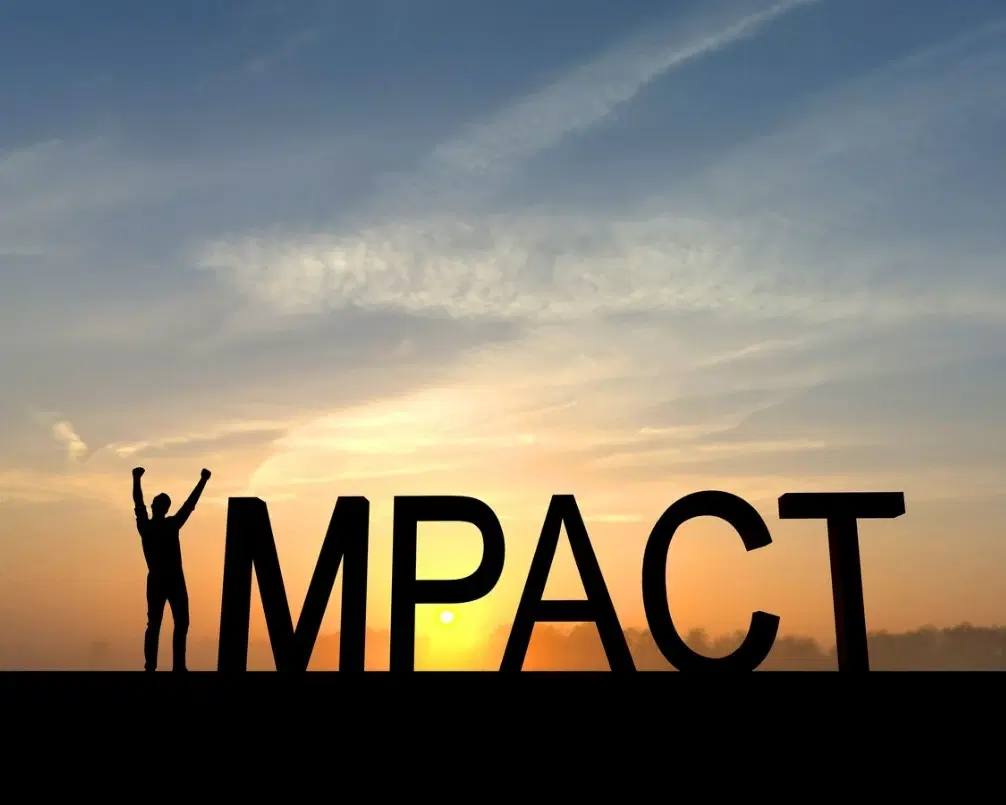Quick Bites

Quick Bites
Effecting Change Indirectly
Eddie Robinson was head coach of the football team at Grambling State University. Recruiting for the team was always difficult because GSU had to compete with bigger and more successful football programs. To get the best players, Robinson wouldn't try to recruit them. He would recruit the parents! He knew that if he could sell GSU to the parents, he would get the player. There is a lesson here for socially responsible investing. If you want to influence a company, you can do so by influencing their suppliers. True, the company controls operations and production but suppliers control the means for conducting operations and production. Like parents providing the needed means for their children to operate in their defined spheres – school, the playing field – suppliers provide companies with what they need to do business. No suppliers, no business.
3 min read

Quick Bites
On Using Stock Prices to Serve Humanity
Publicly traded companies typically reveal the amount of stock and stock options held by insiders such as CEOs and CFOs. Moreover, executive pay is oftentimes tied to the stock price. So, on top of their insider holdings, c-suite compensation can increase when the stock price does. This structure is intended to create a clear incentive for executives; make decisions that increase the stock price. That might mean increasing sales, lowering labor costs by firing employees or cutting pay, or increasing stock buybacks and/or cash dividends. There is a debate to be had about executive compensation. And conflicts of interest. However, I want to focus on how investors can affect company decisions through its stock price by rewarding certain humane behaviors.
3 min read

Quick Bites
The Benefits of CSR to Business: Real or Imagined?
We've all seen them. The glossy pages of artfully produced Corporate Social Responsibility (CSR) reports that reflect what a company is spending on their marketing team as much as it does their commitment to ESG. They tout reductions in environmental damage, employee diversification initiatives and contributions to social justice causes of the day. But do they provide anything more than
3 min read

Quick Bites
Is Your ESG Portfolio a Sugarcoated Fantasy Land?
A popular approach to socially responsible investing today is to look at what are considered the most socially responsible companies in each industry, give them ratings based on available data and comparisons, and include those with the highest marks in a socially responsible investment portfolio. For example, as part of this portfolio you might invest in the best tech company and the best healthcare company, but also the best oil company and the best firearms manufacturer etc. You get the idea.
3 min read

Quick Bites
Positive Impact Doesn't Require Perfection
"Perfect is the enemy of the good." This expression is often attributed to Voltaire, the French Enlightenment writer and philosopher. Earlier philosophers established the idea of the "golden mean," which is the desirable outcome between two extremes. The point these philosophers were trying to get across is this; perfection is impossible to obtain.
2 min read
Analysis

Analysis
Is Humanity the Best Investment? A Clue from Covid
I believe that
5 min read

Analysis
What's Hiding Under Those ESG Labels?
A major financial firm that manages over $2T recently boasted of their ESG research team and methods. Among other, less ambiguous points of pride, this firm chose to emphasize:
6 min read

Analysis
Can Paying Employees More Help Investors? A Lesson from the Rise of American Industry
The rise of the American manufacturing economy is often tied to the story of the early years of Ford Motor Company. Some elements of this story have reverberated through the rise of the information economy, the gig economy, and likely the next few economies to come. The reasons are legion. Among them is a labor relations decision made by Ford in 1914, which now seems to read as a classic example of corporate decision-making based on optimizing the value of the firm for humankind.
5 min read

Analysis
Are Prescription Drug Prices Too High? Or Are They An Investment In Living Longer?
We seem to constantly see and hear headlines about high prescription drug prices. And, of course, there is something to be said for getting the benefit of medical innovation at the lowest possible price. But we may justifiably ask: what drug prices would be fair? Just consider the value of the benefit of pharmaceuticals in terms of extending life expectancy. Out of all the innovations of modern medicine (e.g. procedures, devices, diagnostics, sanitation), it is pharmaceuticals that seem to account for about half of the gains in life expectancy (1). Considering that life expectancy was close to 30 at the beginning of the 20th century (2) and is almost 80 now (3), half of that nearly 50 year gain in life expectancy for every person can be attributed to pharmaceuticals. And what does this cost? The world spends just over $1 trillion per year on pharmaceuticals, with a disproportionate amount of that spending concentrated in the United States (4). One would have to set a pretty low value on human life to make the argument that the world is overpaying. The math works out to just shy of $3,500 paid per year for each person worldwide. I think we would all probably agree on a common choice between paying that much or dying 25 years earlier.
5 min read

Analysis
Can a Gender-Diverse Board Improve Corporate Performance?
Gender diversity on boards is one of the main criteria that investment managers use to evaluate companies' corporate social responsibility. There are, of course, many reasons why people think gender diversity is important. One of the arguments for board diversity is that having diverse viewpoints expressed within the leadership team can improve the overall performance of the organization. However, despite its popular appeal, the research on outcomes relating to the measurable impact of board diversity on corporate performance is mixed.
5 min read

Analysis
Slow and Steady Can Win the Socially Responsible Investing Race
You're scrolling through your social media news feed when you see a post about a particular company and its latest scandal. Let's say it's a powerful company with an outspoken CEO who has said something that makes it seem like he doesn't care about climate change. You see comments from your friends echoing shared outrage:
3 min read

Analysis
Can Socially Responsible Investors Change Bad Companies from Within, or Should They Stay Away?
There is a bad cliché from doomed romantic storylines where one person in the relationship believes they can change the other - even when the situation is hopeless. While it makes for depressing TV, it might hold the key to a raging debate in the world of ethical investing: Should a socially responsible investor invest in bad companies to try to change them from within, or should they stay away and instead exclusively invest in the good companies?
4 min read

Analysis
Juneteenth: Then and Now
What is Juneteenth?
7 min read

Analysis
Giggle's Humankind Value
If you’re reading this article we expect that you’ve read our
10 min read

Analysis
Let’s Talk About the Issues
At Humankind, our research team is hard at work gathering information about a wide variety of human impact issues to incorporate into our portfolio building process. Below is a list of the issues, both positive and negative that we are currently incorporating into our human impact model. When you’re done reading through them you can learn more
26 min read
Basics

Basics
What is a Circular Economy?
People marvel at cycles in nature that renew for millions of years. Food chains are circular, with even the largest predators nourishing the soil and organisms that live in it. Carbon flows in a cycle, storing in the ground and in plants and releasing when things breathe and burn. The idea of a circular economy suggests that people, too, can contort how they manage resources into an efficient and waste-free cycle, just as they unraveled natural cycles to create the economy we have now.
10 min read

Basics
Green Bonds and Socially Responsible Investing
The 2016 Paris Accords highlighted the need for immediate and decisive action in resolving the still-worsening climate crisis. The Accords’ main goals were to reduce the global temperature rise below 2°C above pre-industrial levels, to decrease carbon emissions by 50 percent in 2030, which would prevent a global temperature increase of 1.5°C, to increase the ability of countries to deal with climate change, and to direct finance flows to projects aimed at greenhouse gas reduction and other sustainability efforts. That last goal of financial reforms enabled companies, governments, and retail investors alike to support environmental protection and sustainable development projects anywhere in the world, and one key facilitator of these environmental reforms has become the green bond market. In this article, we’ll explain what green bonds are and examine their role in the fight against climate change.
10 min read

Basics
Understanding ETFs and Stocks
If you are just starting to invest, it is worthwhile to understand what an ETF is and how it differs from an individual company stock. An ETF, or
10 min read

Basics
What is ESG Integration?
According to the United States Securities and Exchange Commission (SEC), ESG Integration is an investment strategy that considers “one or more ESG factors alongside other, non-ESG factors in investment decisions.” “ESG” stands for Environmental, Social, and Governance criteria which form a framework for understanding a company’s relationship with ESG issues. “Integration” refers to the level of commitment to using ESG criteria in an investment strategy. The SEC, which regulates the US Securities industry, released a proposed rule on May 25th, 2022 that intends to bring clarity to the mass of ESG funds, investment products, and strategies now on the market. The proposal segments the spectrum of ESG investment strategies into three categories: ESG Integration, ESG-Focused, and a subset of ESG-Focused called Impact.
6 min read

Basics
ESG and Sustainability
ESG and sustainability were once niche terms known mainly by
7 min read

Basics
B Corps and Public Benefit Corporations: A Look at the Business World's Approach to Social Responsibility
Over the last decade, people have become increasingly aware of both the social benefits and negative impacts of the companies they support. They have witnessed individuals, communities, and the environment suffering because of companies that ignore social costs for the sake of profits. This has led more investors and consumers to support businesses that appear to maximize both social impact and profits. Companies that try to maximize both social impact and profits are called Benefit Corporations. There are two different ways for companies to be considered Benefit Corporations - one is by receiving a certification from the non-profit B Lab, and the other is by registering your business with a State government as a Benefit Corporation. Benefit Corporations certified by B Lab are most commonly called B Corps. Benefit Corporations registered with State governments can have different names depending on the state law, but here we’ll call them Public Benefit Corporations (PBCs), which is what the State of Delaware calls them. In this article we’ll introduce you to both B Corps and PBCs and review some of their similarities and differences.
5 min read

Basics
What Does ESG-Focused Mean?
ESG is a term commonly used to incorporate three broad categories of interest for investors: Environmental, Social, and Governance. ESG factors can play an important role in investing and business decision-making. As time goes on, more ESG frameworks and reporting metrics are being created and updated, and investors and businesses alike can use these tools to gauge and improve upon their investments’ impact on humanity or shield their portfolio from ESG risks.
6 min read

Basics
What is ESG Impact?
Businesses and investors have begun to adopt Environmental, Social, and Governance (ESG) frameworks to help them maximize the good they do while minimizing the bad. ESG frameworks and reporting standards have since proliferated, and a recent proposed rule from the United States Securities and Exchange Commission (SEC) aims to protect investors from potential ESG-related
5 min read

Basics
What is Ethicality?
Ethicality is like morality. Just like morality is the broader concept associated with being moral, ethicality is the broader concept associated with being ethical. In other words, someone making lots of ethical choices may be trying to live up to the ideals of ethicality.
5 min read

Basics
Ethical Companies
An ethical company is a company that treats people well. Companies can sometimes be too focused on making money and end up hurting people along the way. However, an ethical company will try to minimize the negative impact that they have on people and maximize the good that they do while they operate.
8 min read

Basics
Corporate ESG: A Holistic Approach to Sustainability and Social Responsibility
The concept of corporate ESG (Environmental, Social, and Governance) has gained significant attention in recent years as businesses and investors recognize the importance of sustainability and
12 min read

Basics
Can You Trust ESG Scores?
What could be more central to ESG investing than ESG scores? As concern for the state of the world grows, investors consider Environmental (E), Social (S), and Governance (G) factors in their decisions with increasing urgency. The acronym ESG is sometimes used as shorthand for socially conscious investing. Critics say the scoring system behind ESG, however, lacks consistency and has motives that are not socially conscious. Are the critics right? Can we trust
10 min read

Basics
What is Greenwashing and How to Spot it
Greenwashing is the practice of claiming that a company or portfolio of companies is more green, sustainable, or ethical than it really is. With the recent rise in popularity of ESG (Environmental, Social, Governance) investing, many traditional investment firms have rushed to provide ratings and options to meet this new demand. Unfortunately, this rush does seem to have created some portfolios that are merely marketed as ethical as opposed to being truly ethical – and this has led to increasingly loud calls that some investment firms aren’t really doing the research on social responsibility – that they are merely greenwashing, and therefore misleading the public.
6 min read

Basics
How to Choose an Ethical ETF that’s Right for You
An ethical ETF is an exchange traded fund that aims to invest in an ethical manner. For example, if the ETF is focused on investing in ethical stocks, it could aim to invest more in companies that are trying to be socially responsible - i.e. do more good (and less bad) for society.
6 min read

Basics
What Does Socially Conscious Mean?
To be socially conscious means being deeply aware of the people around you in society – how you impact them and how they impact you. Being socially conscious can make you feel empathy for others and therefore mindful of how your actions impact them. To help make this definition clearer, the opposite of being socially conscious is being narrow-mindedly selfish, or thinking that you alone are important while those around you are not – so you don’t care how your actions impact others. Individuals, groups of people, and even companies can exhibit socially conscious behavior.
8 min read

Basics
Ethical Investing: What is it and How to Do it
What is Ethical Investing?
10 min read

Basics
How to Build a Sustainable Portfolio
What is a Sustainable Portfolio?
8 min read

Basics
An Introduction to Jobs in ESG
Environmental, Social, and Governance (ESG) jobs, are positions that prioritize sustainability and social responsibility in the workplace. These jobs can be found in a variety of industries, including finance, technology, and consulting, and they often involve working on projects that have a positive impact on the environment, society, or both.
7 min read
Humankind Portfolios

Humankind Portfolios
How We Select and Monitor the ETFs in Your Humankind Portfolio
Here at Humankind, our team of PhDs and CFAs is hard at work, gathering and synthesizing information about how we believe companies are behaving toward their people. We always try to invest in the ETFs whose underlying companies are having more of a positive impact on people, and of course, less of a negative impact. In practice, this tilts Humankind’s Portfolios away from ETFs that, based on our research, invest in companies which do a lot of harm, like those that sell toxic products, or pollute our air, and instead tilts Humankind Portfolios toward ETFs that invest in companies that do a lot of good, like those which provide access to clean water, or are researching new ways to cure disease. We do all this with an eye toward selecting diversified ETFs that not only have more of a positive human impact, but that can also help you meet your financial goals. Not to mention – we keep an eye on how these ETFs are performing over time – using our impact and financial lenses, reshuffling and rebalancing your portfolio as necessary. The idea is for you to be able to essentially set it and forget it, subject to any changes in your situation you inform us about, while we do this work on your behalf.
6 min read

Humankind Portfolios
How Humankind Portfolios' Pricing Works
We aim to charge a low monthly fee for managing your portfolio – that way, more of your earnings can go toward meeting your financial goals. Our basic fee is just $4 per month ($48 per year) on accounts that have less than $20,000 in assets invested with us. Once an account passes $20,000, we charge 25 basis points per year, which means that for every $10,000 you have invested, we charge $25. For example, for clients with $20,000, that translates to $50 per year, charged monthly.
4 min read
Get the latest posts in your inbox
I agree to the Terms of Use and acknowledge that I have read the Privacy Policy.
